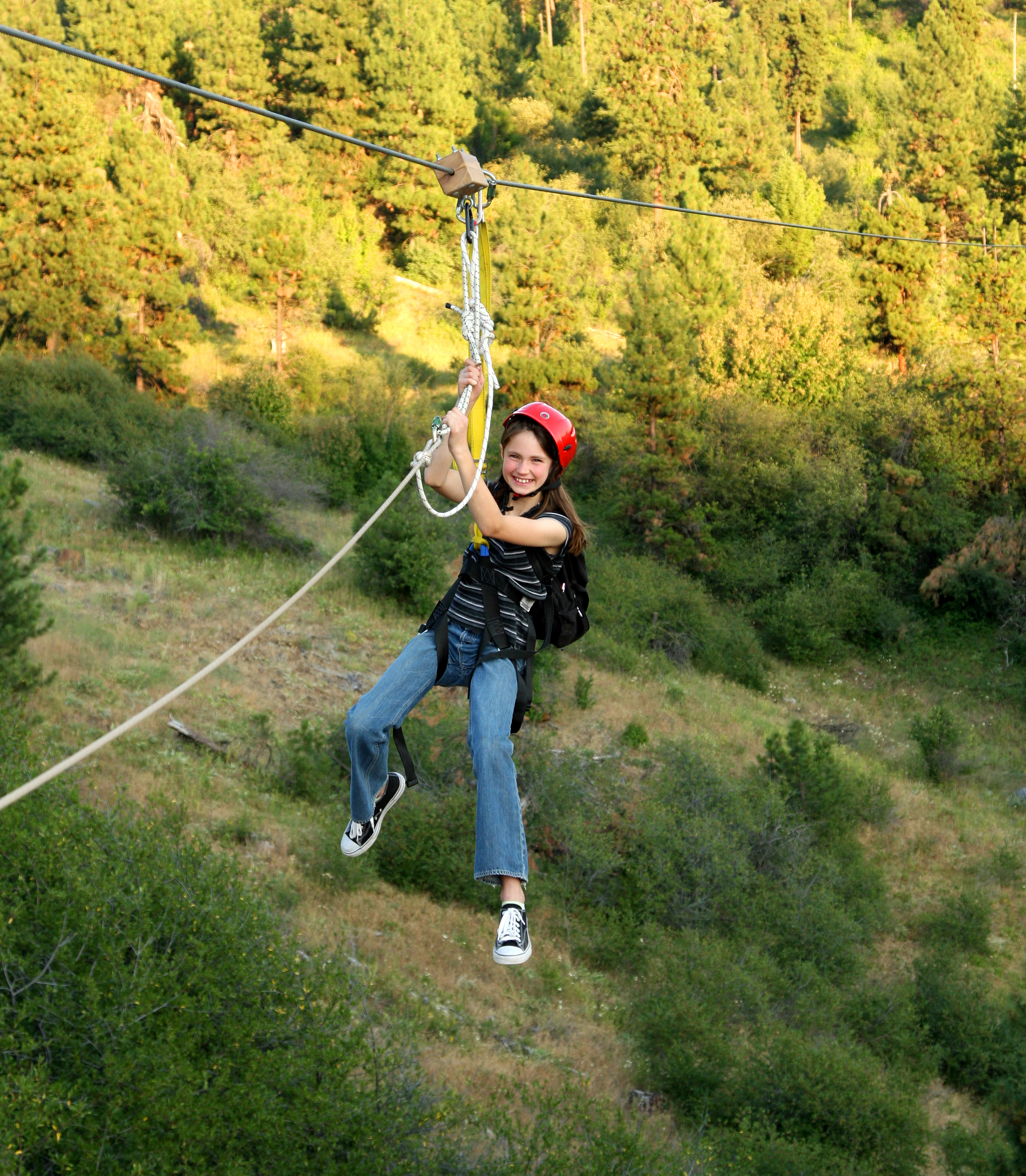Zip line is a suspended metal cable along which a person glides by using a pulleylike device called a trolley. The person may hang from the trolley by a handle but usually is strapped to it by a harness. Zip lining is a popular activity for thrill seekers, who enjoy gliding along sloped zip lines at high speeds and at dizzying heights. Many zip lines are located in adventure parks and in the treetops of forests or on the slopes of mountains.

People generally zip line between platforms, which may be free-standing or mounted in treetops or on natural slopes. Gravity pulls the rider along a downward slope. Riders may be slowed at the end by an upward bend in the cable or by a specialized braking system.
Zip liners can reach speeds of up to 100 miles (160 kilometers) per hour. Many zip lines are hundreds of feet or meters above the ground, and some of the longest zip lines are thousands of feet or meters long. For example, a zip line named “the Monster” at the Toroverde Adventure Park in Puerto Rico is 8,300 feet (2,500 meters) long. “The Monster” carries riders at speeds up to around 90 miles (150 kilometers) per hour. Zip lines are part of many rope challenge courses and treetop adventure excursions.
Zip lining began as a form of transportation in remote areas, dense jungles, and mountainous regions. People in such areas have used zip lines to move goods, passengers, and livestock. Zip lines have also helped mountaineers to traverse (cross) various gaps.
Wildlife biologists began to use zip lines as a simple, low impact means of transportation in the rain forest canopy in the late 1900’s. In 1979, Donald Perry, an American biologist nicknamed “Monkey Man,” set up a zip line to study life in the forest canopy in Costa Rica . He connected three treetops with a 1,200-foot (360-meter) zip line made of polyester rope. In 1995, Darren Hreniuk, a Canadian entrepreneur, created a zip line tour in Costa Rica’s Monteverde Cloud Forest. Zip lines quickly became a feature attraction in ecotourism, tourism intended to help preserve the natural environment. Zip lines spread throughout the tropical rain forests of Latin America and eventually to mountains in the United States and jungles in Thailand, among other places.
Zip lining excursions must be monitored closely by guides to ensure rider safety. Zip line workers must ensure that all equipment is properly maintained. Safety regulations vary from country to country and park to park. Accidents have been caused by miscommunication or poor maintenance, sometimes resulting in dangerous collisions between riders. Typical safety equipment includes a harness and helmet.
